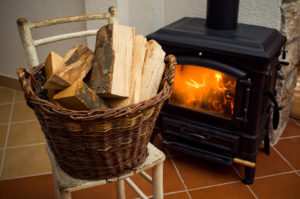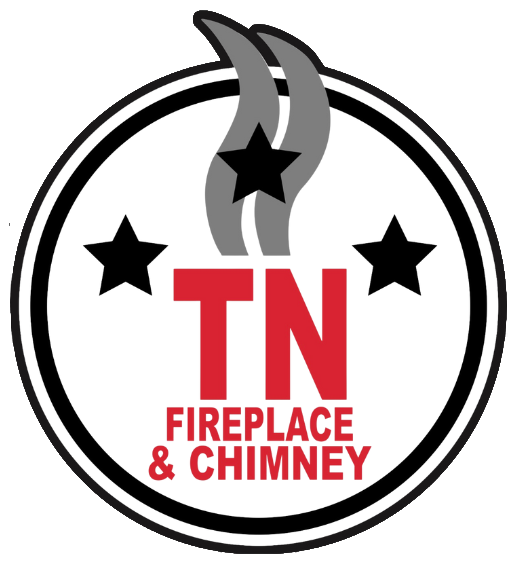Are you in the market for a new wood burning appliance? If you are, you’ve probably noticed that there is a lot of talk about the new 2020 EPA guidelines. The Environmental Protection Agency (EPA) sets 

High Efficiency Appliances
High efficiency appliances generally use 2 different types of fuel, wood, and gas. High efficiency wood burning appliances differ from traditional open hearth systems by how heat is utilized. In a traditional, open hearth system, some of the heat is radiated into the living areas, while a lot of it is lost out of the chimney. In a high efficiency wood burning appliance, wood is burned in an air-tight firebox with a sealed door and produces higher heat that is directed into living areas. The higher temperatures created in a high efficiency wood burning appliance mean that the wood burns hotter, and therefore produces less emissions.
High efficiency gas appliances work a little differently, but use the same concept. They usually consist of a sealed firebox with a solid piece of glass in front of it. A high efficiency gas appliance pulls in combustion air from outside and uses a blower to direct heat indoors. A high efficiency gas appliance should not be confused with a gas log set. A gas log set is a burner that sets amid ceramic logs, giving it the look of a real wood fire. Although it produces a little heat, it is mainly used to add ambiance to a home.
2020 EPA Standards
Every year, the EPA reviews its emission requirements for heating appliances to see if any changes need to be made. The reason that the EPA changes requirements is they believe that the technology exists to reduce the amount of carbon that a wood burning appliance emits. In 2020, the EPA decided to change some of the requirements for high efficiency wood appliances. Effective on May 15, 2020, any adjustable rate wood burning stove must produce under 2.5 grams of carbon per hour for cord wood burning. With this new standard in place, the EPA estimates an approximately 46,000 ton reduction in carbon air pollutants annually, reducing the amount of cancerous pollutant produced by wood burning appliances by 25 percent.
There are pros and cons to this standard. On the upside, if less carbon is being emitted, that means that it is being burned instead. This translates into less total wood needed to heat your home and longer burn times. Then there is also the added benefit of producing less carbon emissions. On the other hand, there are some potential performance issues with this new requirement. With less carbon, flue gas temperatures are lower, which can cause drafting issues more easily if conditions aren’t perfect (e.g. high moisture wood, negative home air pressure) This can also mean that many BTU requirements that are set by manufacturers aren’t being met, leading to lower heating value. This is why it’s important to know about the heating appliance that you are buying and how it might be affected by your home’s environment. At TN Fireplace and Chimney, our trained professionals can make sure that your new wood burning appliance meets all the EPA standards and will perform to your standards.
Another issue is that it’s estimated that about half of the wood burning appliances on the market will not meet this new requirement. This means a couple of things for consumers. First, if you are buying a new wood burning appliance before May 15, 2020, you can still purchase one of these non-compliant units. The retailer must disclose to you that the appliance will be out of compliance and you should, hopefully, be able to find a good deal on these appliances. Again, homeowners will be allowed to use these appliances, but they must be purchased and installed before May 15, 2020. After the new regulation takes place, every wood burning appliance sold needs to have a 2020 compliant sticker on it and retailers must get rid of any old units. In fact, they aren’t even allowed to keep display models.
Gas Appliances
Gas appliances purchases are currently outpacing wood burning ones. Low cost and ease of use are among a number of reasons why. Now, there is another reason why gas appliances are becoming even more attractive to homeowners and it has to do with the pilot light, or the lack thereof one. A new technology called intermittent pilot ignition, or IPI automatically lights the pilot burner while simultaneously operating the gas valve of a heating system when your thermostat triggers it. This means that you don’t have to have your pilot light constantly running which is a huge safety advantage as well as a lot less work trying to light and bleed out pilot lights every year. Currently, IPI isn’t required in the United States, so if you want to take advantage of it, make sure that you ask one of our knowledgeable appliance experts about which appliances have it.
It is important to make sure that you are keeping up with all of the safety and regulatory requirements associated with your heating appliances. For example, did you know that a lot of gas log sets in homes don’t have all the proper safety mechanisms in place to operate as safely as possible? If you are in the market for a new wood or gas appliance, or you have an older appliance that you aren’t sure is up to code, we here at TN Fireplace and Chimney can help you understand if there are any risks or concerns associated with your current appliance, and what we can do to mitigate your concerns. If you live in Knoxville or the surrounding areas, please contact TN Fireplace and Chimney at (865) 922-2262, or use our online scheduling tool to schedule a gas inspection or servicing. We look forward to helping you determine what type of appliance is best for your home.


